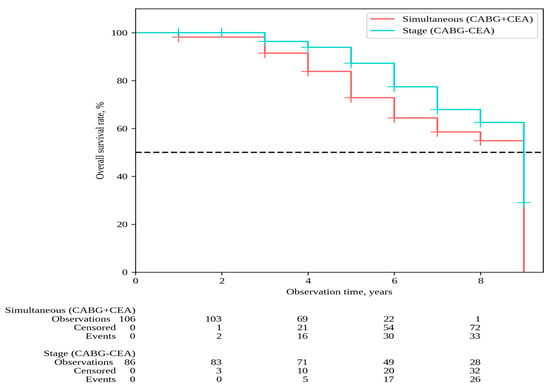Journal Description
Pathophysiology
Pathophysiology
is an international, peer-reviewed, open access journal on the etiology, development, and elimination of pathological processes. Pathophysiology is the official journal of the International Society for Pathophysiology (ISP) and is published quarterly online by MDPI (from Volume 27, Issue 1 - 2020).
- Open Access— free for readers, with article processing charges (APC) paid by authors or their institutions.
- High Visibility: indexed within ESCI (Web of Science), Scopus, PMC, PubMed, and other databases.
- Journal Rank: CiteScore - Q2 (Pathology and Forensic Medicine)
- Rapid Publication: manuscripts are peer-reviewed and a first decision is provided to authors approximately 22.6 days after submission; acceptance to publication is undertaken in 3.9 days (median values for papers published in this journal in the second half of 2023).
- Recognition of Reviewers: APC discount vouchers, optional signed peer review, and reviewer names published annually in the journal.
Latest Articles
Early and Long-Term Results of Simultaneous and Staged Revascularization of Coronary and Carotid Arteries
Pathophysiology 2024, 31(2), 210-224; https://doi.org/10.3390/pathophysiology31020017 - 13 Apr 2024
Abstract
►
Show Figures
Background: Carotid artery disease is prevalent among patients with coronary heart disease. The concomitant severe lesions in the carotid and coronary arteries may necessitate either simultaneous or staged revascularization involving coronary bypass and carotid endarterectomy. However, there is presently a lack of consensus
[...] Read more.
Background: Carotid artery disease is prevalent among patients with coronary heart disease. The concomitant severe lesions in the carotid and coronary arteries may necessitate either simultaneous or staged revascularization involving coronary bypass and carotid endarterectomy. However, there is presently a lack of consensus on the optimal choice of surgical treatment tactics for patients with significant stenoses in both carotid and coronary arteries. The aim of the current study was to compare the 30-day and long-term outcomes of coronary and carotid artery revascularization surgery based on the simultaneous or staged surgical tactics. Material and Methods: This single-center retrospective study involved 192 patients with concurrent coronary artery disease and carotid artery stenosis ≥ 70%, of whom 106 patients underwent simultaneous intervention (CABG + CEA) and 86 patients underwent staged CABG/CEA. The mean time between stages ranged from 1 to 4 months (mean 1.88 ± 0.9 months). The endpoints included death from any cause, non-fatal stroke, non-fatal myocardial infarction (MI), and major adverse cardiovascular events (MACEs) (death + non-fatal MI + non-fatal stroke) within 30 days after the last intervention and in the long-term follow-up period (median follow-up—6 years). Results: The 30-day all-cause mortality, incidence of postoperative non-fatal MI, non-fatal stroke, and MACEs did not exhibit differences between the groups after single-stage and staged interventions. However, the overall risk of postoperative complications (adjusted for the risk of any complication per patient) (OR 2.214, 95% CI 1.048–4.674, p = 0.035), as well as the duration of ventilatory support (p = 0.004), was elevated in the group after simultaneous interventions compared with the staged intervention group. This difference did not result in an increased incidence of death and MACEs in the group after simultaneous interventions. In the long-term follow-up period, there were no significant differences observed when comparing simultaneous or staged surgical tactics in terms of overall survival (54.9% and 62.6% in Groups 1 and 2, respectively, P log-rank = 0.068), non-fatal stroke-free survival (45.6% and 33.6% in Groups 1 and 2, respectively, P log-rank = 0.364), non-fatal MI-survival (57.6% and 73.5% in Groups 1 and 2, respectively, P log-rank = 0.169), and MACE-free survival (7.1% and 30.2% in Groups 1 and 2, respectively, P log-rank = 0.060). The risk factors associated with an unfavorable outcome included age, smoking, BMI, LV EF, and atherosclerosis of the lower extremity arteries. Conclusions: This study revealed no significant difference in the impact of simultaneous CABG + CEA or staged CABG/CEA on the incidence of death, stroke, MI, and MACEs over a 30-day and long-term follow-up period. Although the immediate results indicated an increased risk of a complicated course (attributable to overall complications) and more prolonged ventilation after simultaneous CABG + CEA compared with staged CABG/CEA, this did not lead to an increase in fatal complications. Therefore, the implementation of either tactic is considered eligible and appropriate following a thorough operative risk assessment.
Full article
Open AccessReview
COVID-19-Induced Diabetes Mellitus: Comprehensive Cellular and Molecular Mechanistic Insights
by
Praise Tatenda Nhau, Mlindeli Gamede and Ntethelelo Sibiya
Pathophysiology 2024, 31(2), 197-209; https://doi.org/10.3390/pathophysiology31020016 - 08 Apr 2024
Abstract
Despite evidence demonstrating the risks of developing diabetes mellitus because of SARS-CoV-2, there is, however, insufficient scientific data available to elucidate the relationship between diabetes mellitus and COVID-19. Research indicates that SARS-CoV-2 infection is associated with persistent damage to organ systems due to
[...] Read more.
Despite evidence demonstrating the risks of developing diabetes mellitus because of SARS-CoV-2, there is, however, insufficient scientific data available to elucidate the relationship between diabetes mellitus and COVID-19. Research indicates that SARS-CoV-2 infection is associated with persistent damage to organ systems due to the systemic inflammatory response. Since COVID-19 is known to induce these conditions, further investigation is necessary to fully understand its long-term effects on human health. Consequently, it is essential to consider the effect of the COVID-19 pandemic when predicting the prevalence of diabetes mellitus in the future, especially since the incidence of diabetes mellitus was already on the rise before the pandemic. Additional research is required to fully comprehend the impact of SARS-CoV-2 infection on glucose tolerance and insulin sensitivity. Therefore, this article delves deeper into the current literature and links the perceived relationship between SARS-CoV-2 and diabetes. In addition, the article highlights the necessity for further research to fully grasp the mechanisms that SARS-CoV-2 utilises to induce new-onset diabetes. Where understanding and consensus are reached, therapeutic interventions to prevent the onset of diabetes could be proposed. Lastly, we propose advocating for the regular screening of diabetes and pre-diabetes, particularly for the high-risk population with a history of COVID-19 infection.
Full article
(This article belongs to the Collection Feature Papers in Pathophysiology)
►▼
Show Figures
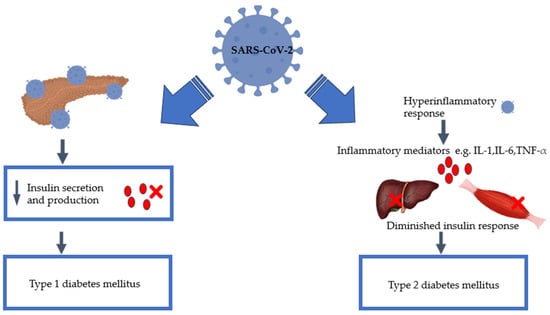
Figure 1
Open AccessBrief Report
Evaluation of Renal Function with Urinary NGAL and Doppler Ultrasonography in ICU Patients: A 1-Year Observational Pilot Study
by
Etrusca Brogi, Rocco Rago and Francesco Forfori
Pathophysiology 2024, 31(2), 190-196; https://doi.org/10.3390/pathophysiology31020015 - 03 Apr 2024
Abstract
Background: We estimated the diagnostic accuracy of urinary NGAL for the diagnosis of AKI. Methods: Urinary NGAL and Creatinine were measured daily for up to 3 days. Doppler ultrasonography was performed within 24 h of admission and for the following 3 days. Results:
[...] Read more.
Background: We estimated the diagnostic accuracy of urinary NGAL for the diagnosis of AKI. Methods: Urinary NGAL and Creatinine were measured daily for up to 3 days. Doppler ultrasonography was performed within 24 h of admission and for the following 3 days. Results: Of the 21 patients, 44% had AKI during their ICU stay. The AKI group presented with higher values of serum Creatinine, renal length, MDRD as well as SAPS II already at admission. Urinary NGAL was significantly higher among patients with AKI and patients AKI-no at T0 (p < 0.0001) and increased steadily on T1 and T2. Urinary NGAL seemed to be a notable diagnostic marker for AKI from the first measurement (T0) with an area under the ROC of 0.93 (95% CI = 0.78–0.99) with a sensitivity of 99%. RRI levels were slightly higher in the AKI group at each time and increased gradually from T0 to T2 but reached statistical significance only at T2 (p = 0.02). Renal length and SAPS II at T0 showed high AuRoc and sensitivity. Conclusions: Urinary NGAL is a valuable marker for AKI in intensive care settings. It seemed that a pre-existing chronic renal disease, the SAPS II and the NGAL at admission represented the principal predictors of AKI.
Full article
Open AccessArticle
Depth of SCUBA Diving Affects Cardiac Autonomic Nervous System
by
Marina Vulić, Branislav Milovanovic, Ante Obad, Duška Glavaš, Igor Glavicic, Damir Zubac, Maja Valic and Zoran Valic
Pathophysiology 2024, 31(2), 183-189; https://doi.org/10.3390/pathophysiology31020014 - 29 Mar 2024
Abstract
►▼
Show Figures
The present study investigated the influence of SCUBA dives with compressed air at depths of 10 and 20 m on ECG-derived HRV parameters in apparently healthy individuals. We hypothesized that cardiac sympathetic activity (measured by HRV parameters) adapts proportionally to diving depth, and
[...] Read more.
The present study investigated the influence of SCUBA dives with compressed air at depths of 10 and 20 m on ECG-derived HRV parameters in apparently healthy individuals. We hypothesized that cardiac sympathetic activity (measured by HRV parameters) adapts proportionally to diving depth, and that both time- and frequency-domain parameters are sensitive enough to track changes in cardiac ANS function during diving activities and subsequently during the recovery period. Eleven healthy middle-aged recreational divers (nine men and two women, age 43 ± 8, all nonsmokers) volunteered to participate in the present study. The participants (all open-circuit divers) were equipped with dry suits and ECG Holter devices and were later randomly assigned to dive pairs and depths (10 m vs. 20 m), and each participant served as his or her own control. No interaction effects (diving depth x time epoch) were found for the most commonly used HRV markers. More precisely, in response to two different diving protocols, a significant post hoc effect of time was observed for HR and SDNN, as these parameters transiently decreased during the dives and returned to baseline after ascent (p < 0.001). The ULF, VLF (p < 0.003), TP, and LF parameters decreased significantly during the dives, while HF significantly increased (p < 0.003). SCUBA diving apparently challenges the cardiac ANS, even in healthy individuals. The observed changes reveal possible underwater methods of influencing the parasympathetic activity of the heart depending on the depth of the dive. These results identify autonomic nervous system markers to track the cardiovascular risk related to diving and point to the possibility of tracking cardiovascular system benefits during underwater activities in selected patients.
Full article
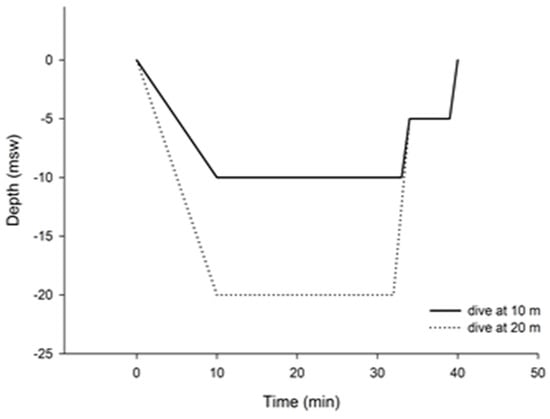
Figure 1
Open AccessArticle
A Multiomics Assessment of Preoperative Exercise in Pancreatic Cancer Survivors Receiving Neoadjuvant Therapy: A Case Series
by
Travis Nemkov, Francesca Cendali, Monika Dzieciatkowska, Daniel Stephenson, Kirk C. Hansen, Catherine M. Jankowski, Angelo D’Alessandro and Ryan J. Marker
Pathophysiology 2024, 31(1), 166-182; https://doi.org/10.3390/pathophysiology31010013 - 20 Mar 2024
Abstract
►▼
Show Figures
To molecularly characterize the impact of exercise on mitigating neoadjuvant treatment (NAT)-induced physical decline in pancreatic ductal adenocarcinoma (PDAC) patients, a multi-omics approach was employed for the analysis of plasma samples before and after a personalized exercise intervention. Consisting of personalized aerobic and
[...] Read more.
To molecularly characterize the impact of exercise on mitigating neoadjuvant treatment (NAT)-induced physical decline in pancreatic ductal adenocarcinoma (PDAC) patients, a multi-omics approach was employed for the analysis of plasma samples before and after a personalized exercise intervention. Consisting of personalized aerobic and resistance exercises, this intervention was associated with significant molecular changes that correlated with improvements in lean mass, appendicular skeletal muscle index (ASMI), and performance in the 400-m walk test (MWT) and sit-to-stand test. These alterations indicated exercise-induced modulation of inflammation and mitochondrial function markers. This case study provides proof-of-principal application for multiomics-based assessments of supervised exercise, thereby supporting this intervention as a feasible and beneficial intervention for PDAC patients to potentially enhance treatment response and patient quality of life. The molecular changes observed here underscore the importance of physical activity in cancer treatment protocols, advocating for the development of accessible multiomics-guided exercise programs for cancer patients.
Full article
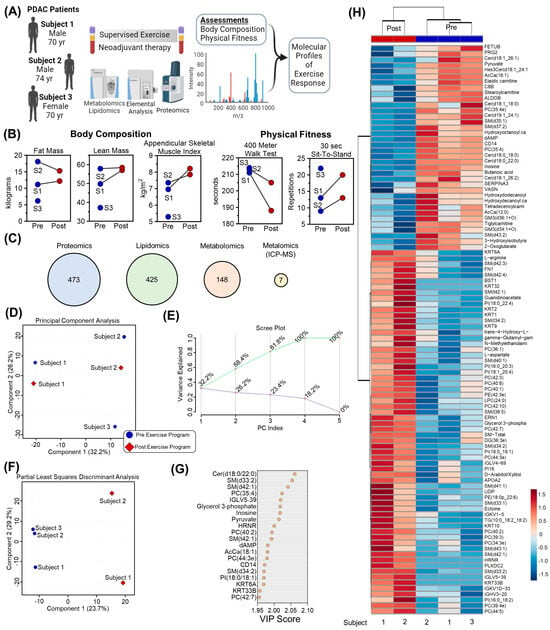
Figure 1
Open AccessArticle
Differential Effect of Chronic Morphine on Neuronal Degeneration in Male vs. Female Mice
by
Chet Brazile, Jr., Ruping Fan, Beau Benoit, Thomas Arnold and Nadejda Korneeva
Pathophysiology 2024, 31(1), 152-165; https://doi.org/10.3390/pathophysiology31010012 - 06 Mar 2024
Abstract
►▼
Show Figures
Opioid abuse in the United States has been increasing at an alarming rate over the past 20 years. Sex differences are documented for the rates of opioid-related overdoses, abuse patterns, and drug-induced physiological effects. In our previous study, we demonstrated that chronic oxycodone
[...] Read more.
Opioid abuse in the United States has been increasing at an alarming rate over the past 20 years. Sex differences are documented for the rates of opioid-related overdoses, abuse patterns, and drug-induced physiological effects. In our previous study, we demonstrated that chronic oxycodone administration in young female rats is associated with neurodegeneration in the brain. Males and females are susceptible to neurodegenerative diseases via differing mechanisms. To investigate whether opioid exposure affects males and females differently, we treated young mice with chronic morphine. We observed that females had stronger antinociceptive responses to acute morphine and showed a delayed development of tolerance. Males had a higher basal Bax level in the brain that correlated with a higher number of apoptotic cells. Morphine increased Bax levels in both males and females without affecting the numbers of apoptotic cells. Morphine increased activated caspase 3 in axons and increased the MBP level in plasma only in females, suggesting a demyelination process. Our data suggest that males are protected from demyelination by having a higher basal BDNF level. Altogether, our results suggest that males and females have different molecular signaling underlying their patterns in the development of morphine tolerance and drug-induced neuronal degeneration.
Full article
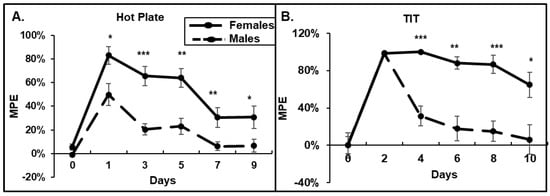
Figure 1
Open AccessConference Report
Emerging Trends in Pathophysiology: Insights from the 9th International Congress of the International Society for Pathophysiology (ISP 2023)
by
Anatolii Kubyshkin, Sergey Bolevich, Leonid Churilov, Vladimir Jakovljevic, Evgeniia Kovalenko and Aleksandr Korovin
Pathophysiology 2024, 31(1), 147-151; https://doi.org/10.3390/pathophysiology31010011 - 04 Mar 2024
Abstract
This article provides a summary of the 9th International Congress of the International Society for Pathophysiology (ISP 2023) which took place in Belgrade, Serbia, from 4 to 6 July 2023. It describes the main trends and the most promising areas of research in
[...] Read more.
This article provides a summary of the 9th International Congress of the International Society for Pathophysiology (ISP 2023) which took place in Belgrade, Serbia, from 4 to 6 July 2023. It describes the main trends and the most promising areas of research in current pathophysiology, including investigations of new pathogenic pathways, and the identification of cellular and molecular mechanisms, target molecules, genetic mechanisms, and new therapeutic strategies. The present article also highlights the research conducted by leading scientific teams and national pathophysiological societies from various countries that adds to our understanding of the pathogenesis of diseases and pathological processes.
Full article
Open AccessArticle
Circadian Rhythms of Body Temperature and Locomotor Activity in Spontaneously Hypertensive Rats under Frequent Changes in Light Conditions
by
Anna Yu. Ryabinina, Anna A. Bryk, Mikhail L. Blagonravov, Vyacheslav A. Goryachev, Andrey A. Mozhaev and Vera S. Ovechkina
Pathophysiology 2024, 31(1), 127-146; https://doi.org/10.3390/pathophysiology31010010 - 01 Mar 2024
Abstract
►▼
Show Figures
Changes in lighting accompany modern urbanization trends and can lead to various pathologies based on circadian disturbances. In this study, we assessed the changes in the circadian rhythm of core body temperature (Tcore) and locomotor activity of Wistar-Kyoto rats (WKY) and spontaneously hypertensive
[...] Read more.
Changes in lighting accompany modern urbanization trends and can lead to various pathologies based on circadian disturbances. In this study, we assessed the changes in the circadian rhythm of core body temperature (Tcore) and locomotor activity of Wistar-Kyoto rats (WKY) and spontaneously hypertensive rats (SHR) following exposure to different lighting conditions: extended light phase of the day (16 h–8 h, 20 h–4 h, 24 h–0 h), light pollution, monochromatic light, and bright light therapy. The telemetry data was collected after experimental lighting conditions during periods with standard lighting (12 h of light and 12 h of darkness) and was processed using linear and cosinor analysis. The daily rhythms of rats’ parameters persisted in accordance with the standard lighting regime. Tcore changes were observed in both groups compared to the initial period: in WKY, a decrease in Tcore during the darkness and an increase during the light; in SHR, the opposite trend, with Tcore increased during the darkness and decreased during the light phase of the day. A relationship between Tcore and activity was observed with weak correlation. WKY exhibited more pronounced signs of adaptive variation and desynchronization compared to SHR, which could be associated with a wider range of functional capabilities of the organism without cardiovascular pathology.
Full article

Figure 1
Open AccessBrief Report
Inhibition of miR-33a-5p in Macrophage-like Cells In Vitro Promotes apoAI-Mediated Cholesterol Efflux
by
Olanrewaju Oladosu, Emma Chin, Christian Barksdale, Rhonda R. Powell, Terri Bruce and Alexis Stamatikos
Pathophysiology 2024, 31(1), 117-126; https://doi.org/10.3390/pathophysiology31010009 - 28 Feb 2024
Abstract
Atherosclerosis is caused by cholesterol accumulation within arteries. The intima is where atherosclerotic plaque accumulates and where lipid-laden foam cells reside. Intimal foam cells comprise of both monocyte-derived macrophages and macrophage-like cells (MLC) of vascular smooth muscle cell (VSMC) origin. Foam cells can
[...] Read more.
Atherosclerosis is caused by cholesterol accumulation within arteries. The intima is where atherosclerotic plaque accumulates and where lipid-laden foam cells reside. Intimal foam cells comprise of both monocyte-derived macrophages and macrophage-like cells (MLC) of vascular smooth muscle cell (VSMC) origin. Foam cells can remove cholesterol via apoAI-mediated cholesterol efflux and this process is regulated by the transporter ABCA1. The microRNA miR-33a-5p is thought to be atherogenic via silencing ABCA1 which promotes cholesterol retention and data has shown inhibiting miR-33a-5p in macrophages may be atheroprotective via enhancing apoAI-mediated cholesterol efflux. However, it is not entirely elucidated whether precisely inhibiting miR-33a-5p in MLC also increases ABCA1-dependent cholesterol efflux. Therefore, the purpose of this work is to test the hypothesis that inhibition of miR-33a-5p in cultured MLC enhances apoAI-mediated cholesterol efflux. In our study, we utilized the VSMC line MOVAS cells in our experiments, and cholesterol-loaded MOVAS cells to convert this cell line into MLC. Inhibition of miR-33a-5p was accomplished by transducing cells with a lentivirus that expresses an antagomiR directed at miR-33a-5p. Expression of miR-33a-5p was analyzed by qRT-PCR, ABCA1 protein expression was assessed via immunoblotting, and apoAI-mediated cholesterol efflux was measured using cholesterol efflux assays. In our results, we demonstrated that lentiviral vector-mediated knockdown of miR-33a-5p resulted in decreasing expression of this microRNA in cultured MLC. Moreover, reduction of miR-33a-5p in cultured MLC resulted in de-repression of ABCA1 expression, which caused ABCA1 protein upregulation in cultured MLC. Additionally, this increase in ABCA1 protein expression resulted in enhancing ABCA1-dependent cholesterol efflux through increasing apoAI-mediated cholesterol efflux in cultured MLC. From these findings, we conclude that inhibiting miR-33a-5p in MLC may protect against atherosclerosis by promoting ABCA1-dependent cholesterol efflux.
Full article
(This article belongs to the Collection Feature Papers in Pathophysiology)
►▼
Show Figures

Figure 1
Open AccessArticle
Rab11a Controls Cell Shape via C9orf72 Protein: Possible Relationships to Frontotemporal Dementia/Amyotrophic Lateral Sclerosis (FTDALS) Type 1
by
Shoya Fukatsu, Hinami Sashi, Remina Shirai, Norio Takagi, Hiroaki Oizumi, Masahiro Yamamoto, Katsuya Ohbuchi, Yuki Miyamoto and Junji Yamauchi
Pathophysiology 2024, 31(1), 100-116; https://doi.org/10.3390/pathophysiology31010008 - 09 Feb 2024
Abstract
►▼
Show Figures
Abnormal nucleotide insertions of C9orf72, which forms a complex with Smith–Magenis syndrome chromosomal region candidate gene 8 (SMCR8) protein and WD repeat-containing protein 41 (WDR41) protein, are associated with an autosomal-dominant neurodegenerative frontotemporal dementia and/or amyotrophic lateral sclerosis type 1 (FTDALS1). The differentially
[...] Read more.
Abnormal nucleotide insertions of C9orf72, which forms a complex with Smith–Magenis syndrome chromosomal region candidate gene 8 (SMCR8) protein and WD repeat-containing protein 41 (WDR41) protein, are associated with an autosomal-dominant neurodegenerative frontotemporal dementia and/or amyotrophic lateral sclerosis type 1 (FTDALS1). The differentially expressed in normal and neoplastic cells (DENN) domain-containing C9orf72 and its complex with SMCR8 and WDR41 function as a guanine-nucleotide exchange factor for Rab GTP/GDP-binding proteins (Rab GEF, also called Rab activator). Among Rab proteins serving as major effectors, there exists Rab11a. However, it remains to be established which Rab protein is related to promoting or sustaining neuronal morphogenesis or homeostasis. In this study, we describe that the knockdown of Rab11a decreases the expression levels of neuronal differentiation marker proteins, as well as the elongation of neurite-like processes, using N1E-115 cells, a well-utilized neuronal differentiation model. Similar results were obtained in primary cortical neurons. In contrast, the knockdown of Rab11b, a Rab11a homolog, did not significantly affect their cell morphological changes. It is of note that treatment with hesperetin, a citrus flavonoid (also known as Vitamin P), recovered the neuronal morphological phenotypes induced by Rab11a knockdown. Also, the knockdown of Rab11a or Rab11b led to a decrease in glial marker expression levels and in morphological changes in FBD-102b cells, which serve as the oligodendroglial differentiation model. Rab11a is specifically involved in the regulation of neuronal morphological differentiation. The knockdown effect mimicking the loss of function of C9orf72 is reversed by treatment with hesperetin. These findings may reveal a clue for identifying one of the potential molecular and cellular phenotypes underlying FTDALS1.
Full article

Graphical abstract
Open AccessArticle
High Glucose Induces Oxidative Stress That Alters Glycocalyx Proteoglycan Levels in Primary Rat Retinal Microvascular Endothelial Cells and in Isolated Ophthalmic Arteries
by
Ivan A. Alvarez, Minsup Lee, Randa S. Eshaq, Wendy Leskova and Norman R. Harris
Pathophysiology 2024, 31(1), 89-99; https://doi.org/10.3390/pathophysiology31010007 - 06 Feb 2024
Abstract
►▼
Show Figures
Our purpose in this study was to identify the role played by oxidative stress in the changes to proteoglycans that occur under hyperglycemic conditions, using primary rat retinal microvascular endothelial cells (RRMEC) and cultured ophthalmic arteries. The cells and blood vessels obtained from
[...] Read more.
Our purpose in this study was to identify the role played by oxidative stress in the changes to proteoglycans that occur under hyperglycemic conditions, using primary rat retinal microvascular endothelial cells (RRMEC) and cultured ophthalmic arteries. The cells and blood vessels obtained from rats were cultured in normal glucose (5.6 mM) and high glucose (25 mM) with or without N-acetylcysteine (NAC), an antioxidant. Intracellular oxidative stress was determined by measuring dihydroethidium (DHE) fluorescence and malondialdehyde (MDA)-modified protein levels. mRNA and protein levels were evaluated using quantitative real-time polymerase chain reaction and immunoblot, respectively. High glucose increased levels of glypican-1 mRNA and protein. The level of syndecan-1 mRNA also was increased, but its protein level was decreased, by high glucose. Evaluation of DHE and MDA showed that high glucose increased oxidative stress. These changes caused by high glucose were significantly reversed by NAC treatment. Matrix metalloproteinase-9 (MMP-9) levels, which increased under high glucose conditions, were suppressed by NAC treatment. Oxidative stress caused by hyperglycemia may be responsible for significant changes to the ocular endothelial glycocalyx.
Full article
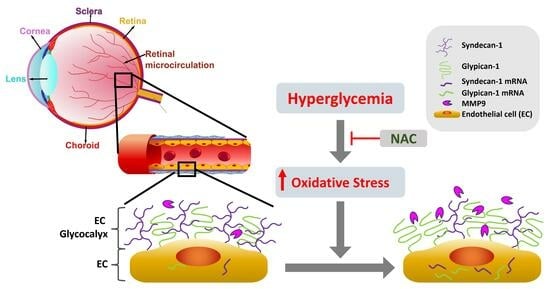
Graphical abstract
Open AccessReview
Gut Microbiome Changes in Anorexia Nervosa: A Comprehensive Review
by
Wendi Zhao, Prabhath Kodancha and Soumitra Das
Pathophysiology 2024, 31(1), 68-88; https://doi.org/10.3390/pathophysiology31010006 - 02 Feb 2024
Abstract
►▼
Show Figures
Anorexia nervosa (AN) remains a challenging condition in psychiatric management and its pathogenesis is not yet fully understood. An imbalance in the gut microbiota composition may contribute to its pathophysiology. This review aims to explore the link between the human gut microbiota and
[...] Read more.
Anorexia nervosa (AN) remains a challenging condition in psychiatric management and its pathogenesis is not yet fully understood. An imbalance in the gut microbiota composition may contribute to its pathophysiology. This review aims to explore the link between the human gut microbiota and AN (objective 1) or refeeding syndrome in AN (objective 2). The online databases MEDLINE and PsycINFO were searched for relevant studies. A total of 14 studies met the inclusion and exclusion criteria and only answered objective 1. A total of 476 AN patients, 554 healthy-weight (HC) controls, and 0 patients with other psychiatric disorders were included. Compared to HC, there were consistently reduced abundances of Faecalibacterium prausnitzii and Roseburia inulinivorans, and increased Methanobrevibacter smithii, in AN patients. Changes in alpha diversity were inconsistent, while beta diversity increased in four of six studies. Our model suggests that an imbalance in gut microbiota composition leads to reduced short-chain fatty acids, contributing to a proinflammatory state in AN, which is also common in other psychiatric comorbidities. Microbial changes may also contribute to the semistarvation state through endocrine changes and altered energy utilization.
Full article
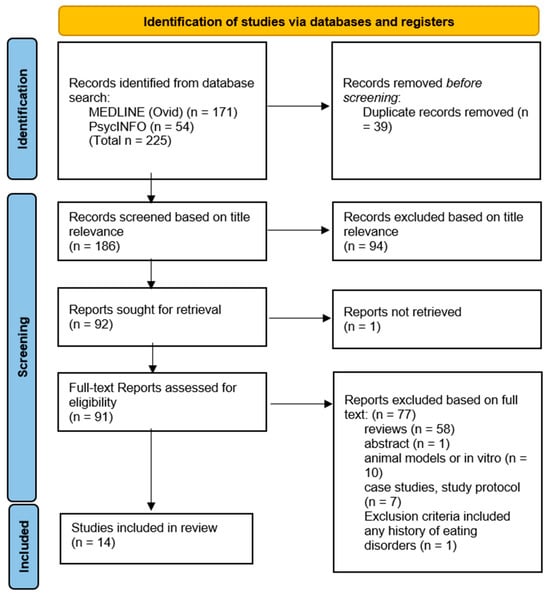
Figure 1
Open AccessReview
A Bird’s-Eye View of the Pathophysiologic Role of the Human Urobiota in Health and Disease: Can We Modulate It?
by
Emilio Jirillo, Raffaele Palmirotta, Marica Colella and Luigi Santacroce
Pathophysiology 2024, 31(1), 52-67; https://doi.org/10.3390/pathophysiology31010005 - 01 Feb 2024
Abstract
For a long time, urine has been considered sterile in physiological conditions, thanks to the particular structure of the urinary tract and the production of uromodulin or Tamm–Horsfall protein (THP) by it. More recently, thanks to the development and use of new technologies,
[...] Read more.
For a long time, urine has been considered sterile in physiological conditions, thanks to the particular structure of the urinary tract and the production of uromodulin or Tamm–Horsfall protein (THP) by it. More recently, thanks to the development and use of new technologies, i.e., next-generation sequencing and expanded urine culture, the identification of a microbial community in the urine, the so-called urobiota, became possible. Major phyla detected in the urine are represented by Firmicutes, Bacteroidetes, Proteobacteria, and Actinobacteria. Particularly, the female urobiota is largely represented by Lactobacillus spp., which are very active against urinary pathogenic Escherichia (E.) coli (UPEC) strains via the generation of lactic acid and hydrogen peroxide. Gut dysbiosis accounts for recurrent urinary tract infections (UTIs), so-called gut–bladder axis syndrome with the formation of intracellular bacterial communities in the course of acute cystitis. However, other chronic urinary tract infections are caused by bacterial strains of intestinal derivation. Monomicrobial and polymicrobial infections account for the outcome of acute and chronic UTIs, even including prostatitis and chronic pelvic pain. E. coli isolates have been shown to be more invasive and resistant to antibiotics. Probiotics, fecal microbial transplantation, phage therapy, antimicrobial peptides, and immune-mediated therapies, even including vaccines for the treatment of UTIs, will be described.
Full article
(This article belongs to the Topic Human Anatomy and Pathophysiology, 2nd Volume)
►▼
Show Figures

Figure 1
Open AccessCase Report
A Refractory Electrical Storm after Acute Myocardial Infarction: The Role of Temporary Ventricular Overdrive Pacing as a Bridge to ICD Implantation
by
Mijo Meter and Josip Andelo Borovac
Pathophysiology 2024, 31(1), 44-51; https://doi.org/10.3390/pathophysiology31010004 - 14 Jan 2024
Abstract
►▼
Show Figures
An electrical storm (ES) is defined as the presence of at least three episodes of sustained ventricular tachycardia or ventricular fibrillation within 24 h. This patient had a previously known arterial hypertension, type II diabetes mellitus, and chronic kidney disease and has presented
[...] Read more.
An electrical storm (ES) is defined as the presence of at least three episodes of sustained ventricular tachycardia or ventricular fibrillation within 24 h. This patient had a previously known arterial hypertension, type II diabetes mellitus, and chronic kidney disease and has presented to the Emergency Department (ED) with symptoms of retrosternal chest pain lasting for several hours prior. The initial 12-lead electrocardiogram revealed ST segment elevation in the anterior leads (V1–V6). Emergent coronary angiography revealed an acute occlusion of the proximal left anterior descending artery (pLAD) and percutaneous coronary intervention was performed with successful implantation of one drug-eluting stent in the pLAD. On day 8 of hospitalization, the patient developed a refractory ES for which he received 50 DC shocks and did not respond to multiple lines of antiarrhythmic medications. Due to a failure of medical therapy, we decided to implant a temporary pacemaker and initiate ventricular overdrive pacing (VOP) that was successful in terminating ES. Following electrical stabilization, the patient underwent a successful ICD implantation. This case demonstrates that VOP can contribute to hemodynamic and electrical stabilization of a patient that suffers from refractory ES and this treatment modality might serve as a temporary bridge to ICD implantation.
Full article
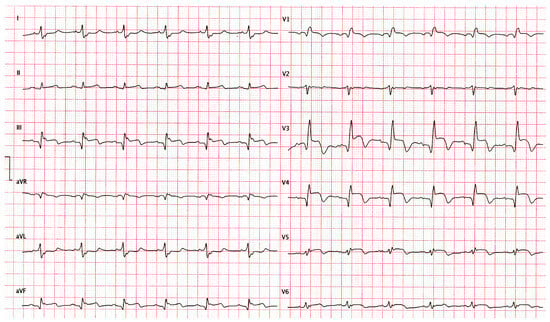
Figure 1
Open AccessReview
Opportunities and Challenges in Catheter-Based Irreversible Electroporation for Ventricular Tachycardia
by
Matthew Leonard Repp and Ikeotunye Royal Chinyere
Pathophysiology 2024, 31(1), 32-43; https://doi.org/10.3390/pathophysiology31010003 - 10 Jan 2024
Cited by 1
Abstract
►▼
Show Figures
The use of catheter-based irreversible electroporation in clinical cardiac laboratories, termed pulsed-field ablation (PFA), is gaining international momentum among cardiac electrophysiology proceduralists for the non-thermal management of both atrial and ventricular tachyrhythmogenic substrates. One area of potential application for PFA is in the
[...] Read more.
The use of catheter-based irreversible electroporation in clinical cardiac laboratories, termed pulsed-field ablation (PFA), is gaining international momentum among cardiac electrophysiology proceduralists for the non-thermal management of both atrial and ventricular tachyrhythmogenic substrates. One area of potential application for PFA is in the mitigation of ventricular tachycardia (VT) risk in the setting of ischemia-mediated myocardial fibrosis, as evidenced by recently published clinical case reports. The efficacy of tissue electroporation has been documented in other branches of science and medicine; however, ventricular PFA’s potential advantages and pitfalls are less understood. This comprehensive review will briefly summarize the pathophysiological mechanisms underlying VT and then summarize the pre-clinical and adult clinical data published to date on PFA’s effectiveness in treating monomorphic VT. These data will be contrasted with the effectiveness ascribed to thermal cardiac ablation modalities to treat VT, namely radiofrequency energy and liquid nitrogen-based cryoablation.
Full article
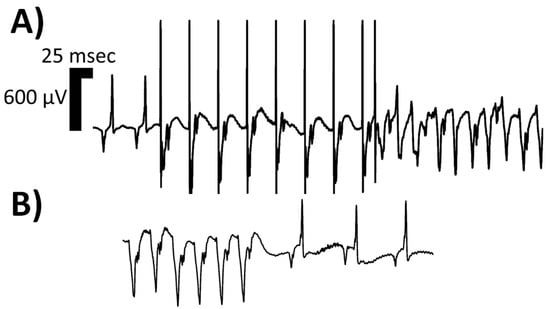
Figure 1
Open AccessReview
Current Views about the Inflammatory Damage Triggered by Bacterial Superantigens and Experimental Attempts to Neutralize Superantigen-Mediated Toxic Effects with Natural and Biological Products
by
Luigi Santacroce, Skender Topi, Ioannis Alexandros Charitos, Roberto Lovero, Paolo Luperto, Raffaele Palmirotta and Emilio Jirillo
Pathophysiology 2024, 31(1), 18-31; https://doi.org/10.3390/pathophysiology31010002 - 09 Jan 2024
Abstract
Superantigens, i.e., staphylococcal enterotoxins and toxic shock syndrome toxin-1, interact with T cells in a different manner in comparison to conventional antigens. In fact, they activate a larger contingent of T lymphocytes, binding outside the peptide-binding groove of the major histocompatibility complex class
[...] Read more.
Superantigens, i.e., staphylococcal enterotoxins and toxic shock syndrome toxin-1, interact with T cells in a different manner in comparison to conventional antigens. In fact, they activate a larger contingent of T lymphocytes, binding outside the peptide-binding groove of the major histocompatibility complex class II. Involvement of many T cells by superantigens leads to a massive release of pro-inflammatory cytokines, such as interleukin (IL)-1, IL-2, IL-6, tumor necrosis factor-alpha and interferon-gamma. Such a storm of mediators has been shown to account for tissue damage, multiorgan failure and shock. Besides conventional drugs and biotherapeutics, experiments with natural and biological products have been undertaken to attenuate the toxic effects exerted by superantigens. In this review, emphasis will be placed on polyphenols, probiotics, beta-glucans and antimicrobial peptides. In fact, these substances share a common functional denominator, since they skew the immune response toward an anti-inflammatory profile, thus mitigating the cytokine wave evoked by superantigens. However, clinical applications of these products are still scarce, and more trials are needed to validate their usefulness in humans.
Full article
(This article belongs to the Special Issue Mosaic of Autoimmunity)
►▼
Show Figures
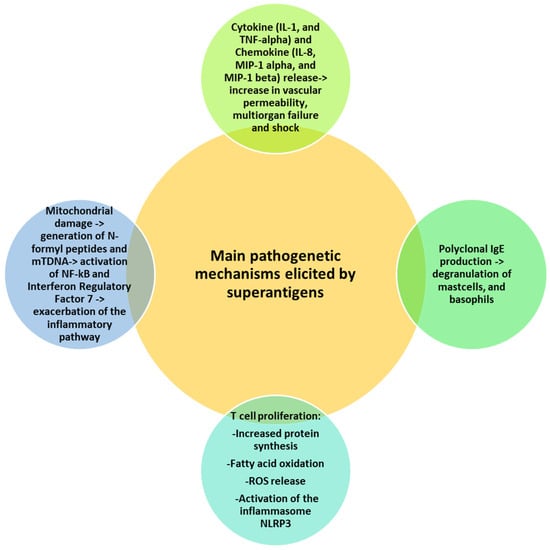
Figure 1
Open AccessArticle
Similar Patterns of Dysautonomia in Myalgic Encephalomyelitis/Chronic Fatigue and Post-COVID-19 Syndromes
by
Varvara A. Ryabkova, Artemiy V. Rubinskiy, Valeriy N. Marchenko, Vasiliy I. Trofimov and Leonid P. Churilov
Pathophysiology 2024, 31(1), 1-17; https://doi.org/10.3390/pathophysiology31010001 - 05 Jan 2024
Cited by 1
Abstract
►▼
Show Figures
Background: There is a considerable overlap between the clinical presentation of post-COVID-19 condition (PCC) and myalgic encephalomyelitis/chronic fatigue syndrome (ME/CFS). Many of their common symptoms can be linked to dysregulation of the autonomic nervous system (dysautonomia). This study aimed to objectively assess autonomic
[...] Read more.
Background: There is a considerable overlap between the clinical presentation of post-COVID-19 condition (PCC) and myalgic encephalomyelitis/chronic fatigue syndrome (ME/CFS). Many of their common symptoms can be linked to dysregulation of the autonomic nervous system (dysautonomia). This study aimed to objectively assess autonomic function in a general group of patients with PCC and in a group of patients with ME/CFS whose disease was not related to COVID-19. We hypothesize that the similarity in the chronic symptoms of patients with PCC and ME/CFS extends to objective autonomic nervous system abnormalities. Methods: Synchronous recordings of an electrocardiogram and continuous dynamics of blood pressure in the digital artery using the Penaz method were obtained using the spiroarteriocardiorhythmography method in 34 patients diagnosed with ME/CFS, in whom the onset of the disease was not associated with COVID-19, 29 patients meeting the PCC definition and 32 healthy controls. Heart rate variability (HRV) and systolic and diastolic blood pressure variability (BPV) were assessed at rest and in tests with fixed respiratory rates. Indicators of baroreflex regulation (baroreflex effectiveness index and baroreflex sensitivity) were additionally determined at rest. Results: The total power and power of low-frequency and high-frequency of RR interval variability at rest as well as baroreflex sensitivity were significantly lower both in PCC and ME/CFS patients compared to healthy controls. Several diagnostic prediction models for ME/CFS were developed based on HRV parameters. During slow breathing, the HRV parameters returned to normal in PCC but not in ME/CFS patients. The correlation analysis revealed a close relationship of HRV, BPV parameters and baroreflex sensitivity with fatigue, but not with HADS depressive/anxiety symptoms in the ME/CFS and PCC patients. Conclusions: A similar pattern of HRV and baroreflex failure with signs of a pathological acceleration of age-dependent dysautonomia was identified in the ME/CFS and PCC patients. The clinical, diagnostic and therapeutic implications of these findings are discussed, in light of previously described relationships between inflammation, vascular pathology, atherosclerotic cardiovascular disease and autonomic dysfunction.
Full article
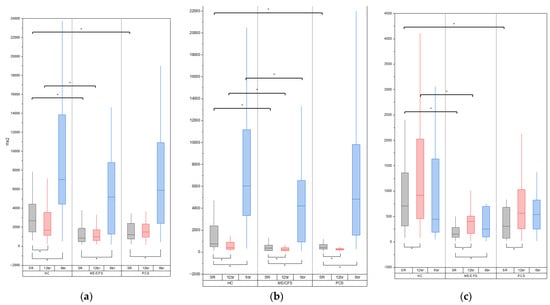
Figure 1
Open AccessSystematic Review
Treatment Strategies for Chronic Coronary Heart Disease with Left Ventricular Systolic Dysfunction or Preserved Ejection Fraction—A Systematic Review and Meta-Analysis
by
Elena Zelikovna Golukhova, Inessa Viktorovna Slivneva, Olga Sergeevna Kozlova, Bektur Shukurbekovich Berdibekov, Ivan Ivanovich Skopin, Vadim Yuryevich Merzlyakov, Renat Kamilyevich Baichurin, Igor Yuryevich Sigaev, Milena Abrekovna Keren, Mikhail Durmishkhanovich Alshibaya, Damir Ildarovich Marapov and Milena Artemovna Arzumanyan
Pathophysiology 2023, 30(4), 640-658; https://doi.org/10.3390/pathophysiology30040046 - 18 Dec 2023
Abstract
►▼
Show Figures
In this meta-analysis, we examine the advantages of invasive strategies for patients diagnosed with chronic coronary heart disease (CHD) and preserved left ventricular (LV) function, as well as those with significant LV systolic dysfunction (LV ejection fraction (EF) < 45%). Material and methods:
[...] Read more.
In this meta-analysis, we examine the advantages of invasive strategies for patients diagnosed with chronic coronary heart disease (CHD) and preserved left ventricular (LV) function, as well as those with significant LV systolic dysfunction (LV ejection fraction (EF) < 45%). Material and methods: We conducted a systematic search to identify all randomized trials directly comparing invasive strategies with optimal medical therapy (OMT) in patients diagnosed with chronic CHD. Data from these trials were pooled using a random-effects meta-analysis. The primary outcome assessed was the all-cause mortality, while secondary endpoints included cardiovascular (CV) death, stroke, myocardial infarction (MI), and unplanned revascularization. This study was designed to assess the benefits of both invasive strategies and OMT in patients with preserved LV function and in those with LV systolic dysfunction. The statistical analysis of the data was conducted using the Review Manager (RevMan) software, version 5.4.1 (The Cochrane Collaboration, 2020). Results: Twelve randomized studies enrolling 13,912 patients were included in the final analysis. Among the patients with chronic CHD and preserved LV systolic function, revascularization did not demonstrate a reduction in all-cause mortality (8.52% vs. 8.45%, p = 0.45), CV death (3.41% vs. 3.62%, p = 0.08), or the incidence of MI (9.88% vs. 10.49%, p = 0.47). However, the need for unplanned myocardial revascularization was significantly lower in the group following the initial invasive approach compared to patients undergoing OMT (14.75% vs. 25.72%, p < 0.001). In contrast, the invasive strategy emerged as the preferred treatment modality for patients with ischemic LV systolic dysfunction. This approach demonstrated lower rates of all-cause mortality (40.61% vs. 46.52%, p = 0.004), CV death (28.75% vs. 35.82%, p = 0.0004), and MI (8.19% vs. 10.8%, p = 0.03). Conclusions: In individuals diagnosed with chronic CHD and preserved LV EF, the initial invasive approach did not demonstrate a clinical advantage over OMT. Conversely, in patients with ischemic LV systolic dysfunction, myocardial revascularization was found to reduce the risks of CV events and enhance the overall outcomes. These findings hold significant clinical relevance for optimizing treatment strategies in patients with chronic CHD, contingent upon myocardial contractility status.
Full article
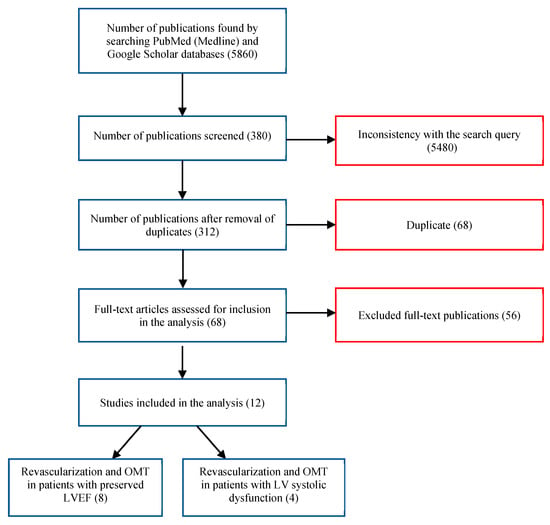
Figure 1
Open AccessSystematic Review
Are Cytomorphogenetic Events Correlated with Oral Mucosal Lesions Induced by Crack Cocaine Use? A Systematic Review
by
Thiago Guedes Pinto, Milena de Barros Viana, Patricia Ramos Cury, Manoela Domingues Martins, Jean Nunes dos Santos and Daniel Araki Ribeiro
Pathophysiology 2023, 30(4), 630-639; https://doi.org/10.3390/pathophysiology30040045 - 05 Dec 2023
Abstract
►▼
Show Figures
The aim of this systematic review was to answer the question of whether crack cocaine can induce cellular and molecular alterations and whether such alterations are somehow related to clinical lesions in the oral mucosa. The searches were undertaken in three electronic databases
[...] Read more.
The aim of this systematic review was to answer the question of whether crack cocaine can induce cellular and molecular alterations and whether such alterations are somehow related to clinical lesions in the oral mucosa. The searches were undertaken in three electronic databases and conducted based on the PRISMA 2020 statement. Eleven studies published between 1994 and 2020 were analyzed. The quality of the included studies was assessed by two independent reviewers (TGP and DAR) through a confounder’s categorization methodology, in which final ratings were attributed (strong, moderate or weak) for each study. From 11 studies included, 7 evaluated the cellular/molecular impact of the addiction in a total of 492 individuals and compared to a control (non-exposure) group (n = 472). The main tests used for cellular alteration were MN and AgNORs. Cells from crack cocaine groups exhibited increased proliferation and MN counting. Only four studies evaluated the prevalence of oral lesions. All of them showed that individuals exposed to crack cocaine presented an increased number of oral lesions. Most studies showed good quality. In conclusion, our results demonstrate that crack use may induce changes at the cellular and molecular level and also exhibit an increased number of oral lesions. However, a correlation between such changes and oral mucosa lesions still needs further investigation and elucidation through other clinical studies in humans.
Full article

Figure 1
Open AccessReview
Surgical Management of Traumatic Meniscus Injuries
by
Hannah R. Popper, Brian E. Fliegel, Dawn M. Elliott and Alvin W. Su
Pathophysiology 2023, 30(4), 618-629; https://doi.org/10.3390/pathophysiology30040044 - 04 Dec 2023
Cited by 1
Abstract
►▼
Show Figures
The menisci increase the contact area of load bearing in the knee and thus disperse the mechanical stress via their circumferential tensile fibers. Traumatic meniscus injuries cause mechanical symptoms in the knee, and are more prevalent amongst younger, more active patients, compared to
[...] Read more.
The menisci increase the contact area of load bearing in the knee and thus disperse the mechanical stress via their circumferential tensile fibers. Traumatic meniscus injuries cause mechanical symptoms in the knee, and are more prevalent amongst younger, more active patients, compared to degenerative tears amongst the elderly population. Traumatic meniscus tears typically result from the load-and-shear mechanism in the knee joint. The treatment depends on the size, location, and pattern of the tear. For non-repairable tears, partial or total meniscal resection decreases its tensile stress and increases joint contact stress, thus potentiating the risk of arthritis. A longitudinal vertical tear pattern at the peripheral third red-red zone leads to higher healing potential after repair. The postoperative rehabilitation protocols after repair range from immediate weight-bearing with no range of motion restrictions to non-weight bearing and delayed mobilization for weeks. Pediatric and adolescent patients may require special considerations due to their activity levels, or distinct pathologies such as a discoid meniscus. Further biomechanical and biologic evidence is needed to guide surgical management, postoperative rehabilitation protocols, and future technology applications for traumatic meniscus injuries.
Full article
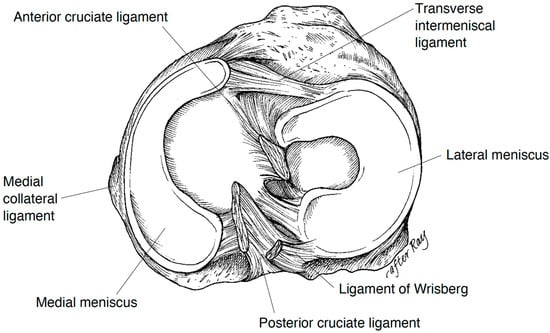
Figure 1
Highly Accessed Articles
Latest Books
E-Mail Alert
News
Topics
Topic in
Anatomia, Biology, Medicina, Pathophysiology, Tomography
Human Anatomy and Pathophysiology, 2nd Volume
Topic Editors: Francesco Cappello, Mugurel Constantin RusuDeadline: 31 May 2024
Topic in
Biology, Cancers, Healthcare, Onco, Pathophysiology, Toxics, Biomolecules, IJMS
Molecular Mechanisms of the Toxicity and Carcinogenicity of Particulates
Topic Editors: Maura Tomatis, Elisabetta AldieriDeadline: 31 December 2024
Topic in
Biomedicines, Cancers, Current Oncology, Onco, Pathophysiology
Individualized Molecular Mechanisms and Treatment in Tumor Metastasis
Topic Editors: Dong Tang, Chen Liu, Bin ChengDeadline: 5 January 2025

Conferences
Special Issues
Special Issue in
Pathophysiology
Pathophysiology behind Orthopaedics Disorders: From Mechanisms to Novel Therapeutic and Surgical Approaches
Guest Editors: Giovanni F. Solitro, Patrick A. MasseyDeadline: 1 July 2024
Special Issue in
Pathophysiology
Effects of Drug Exposure on the Health of Women and Children
Guest Editors: Nadejda Korneeva, Urska CvekDeadline: 15 July 2024
Special Issue in
Pathophysiology
Novel Mechanisms of Gene Regulation in Cardiac Development and Congenital Heart Defects
Guest Editor: Marlin ToumaDeadline: 15 August 2024
Special Issue in
Pathophysiology
New Insights into Diseases with Cognitive Impairment: Development, Genesis, and Treatment
Guest Editor: Omar CauliDeadline: 31 October 2024
Topical Collections
Topical Collection in
Pathophysiology
Feature Papers in Pathophysiology
Collection Editor: Jonathan Steven Alexander





